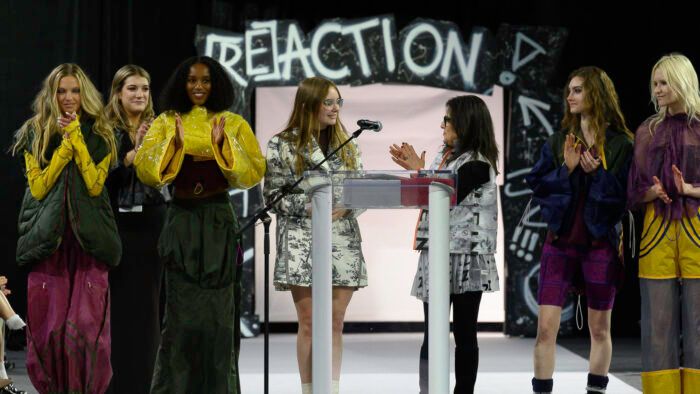
Marist College fashion design student Aleena Brown looked to her childhood memories for inspiration when contemplating her 2023 senior collection. She based her work on Lego toys, the colorful plastic building blocks that were a favorite of hers and that are beloved by children everywhere. Her design decision, along with deft planning and sewing, earned her the 2023 Marist Silver Needle Designer of the Year award. She received the award recently at the Marist Silver Needle Runway 37 show.
Based on repurposed materials
Aleena upcycled tents, bedding, used sweaters, and 10 sleeping bags to create her winning activewear. She chose these “fabrics” for their waterproofing and insulating characteristics, excellent for garments meant to be worn outdoors.
She says the collection and award are “drawing attention to the textile waste crisis that is so prominent within the fashion industry and showing how functionality can be incorporated into garments.”
Using the materials that did not come as traditional yardage was the most challenging part of creating her “Building Blocks” collection.
“I normally had to start prepping tents or sleeping bags three to five days before I wanted to sew. I needed time to seam-rip them and dye them if necessary,” she says.
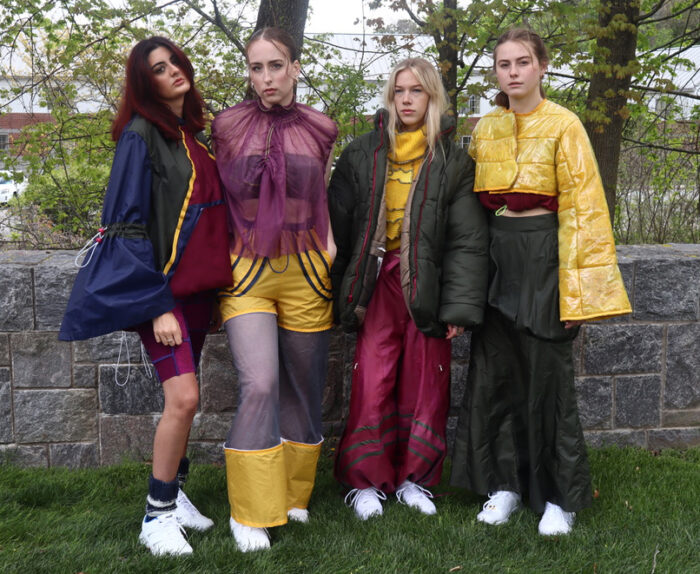
Long-lasting, convertible garments
Including the concept of sustainability was not the only goal of Aleena’s collection.
“I also hope that it brings attention to the idea of moving away from fast fashion and back to long-lasting clothing that is designed to meet the needs of the customer,” she says.
One way she addressed those goals was by constructing convertible clothing. The shorts, for example, can turn into long pants with the help of zippers and mosquito netting.
The puffer jacket’s sleeves zip off at the armholes to transform the jacket into a vest.
She also built adjustable fit into three garments at the waist:
1. The yellow shorts include an elastic drawstring with toggle.
2. The green skirt features a waistband with buttonhole elastic, typically found in children’s clothing.
3. The pink pants were the most experimental. “I designed the pattern to have the front and back overlap at the side seams, which remained open and tacked in a few places,” she explains. “This allowed the two sections of the waistband to move along the tie belt.” The waist can expand or contract, depending on the wearer.
Curves borrowed from Lego pieces
Aleena’s collection features curved seams and piping.
“The circular seams throughout my collection were inspired by the circles found in Legos,” she says. “I spent a lot of time making sure that the seams were sitting properly, and that the piping was even.”
Aleena kept to her idea of making the garments long-lasting by including plenty of topstitching, for garment stability.
“The curved topstitching was a lot easier to execute, but it was still important for me to go slow and take my time. I did many sample swatches of both techniques (curved seams and topstitching) before doing them on the final garments.”
The quilted coats had curved stitching as well. “I had to make sure to go very slow and flatten the stuffing as much as possible for the curved quilting to ensure that the lines didn’t end up pulling or being bumpy.”
Zipper challenges
Aleena, who’s 21, says that at age 5 her grandmother taught her to sew, and she’s dreamed of creating her college clothing collection for years. She has shared her passion for sewing as a sewing instructor to youngsters in after-school programs and summer camps. They’ve made everything from T-shirts and dresses to leggings and rompers.
That’s why she’s a pro at installing zippers. But the zippers she added at the armholes of the puffer jacket were a different story.
“Normally, I would have sewed the armhole and sleeve together and then basted the zipper in. Since there is also a facing in the armhole, I could not do that,” she says. “I first unzipped the separating zipper and sewed the zipper to the armhole. I then zipped the zipper back up and pinned it to the sleeve.”
Based on this experience, she shares some advice. “Be sure to clip your curves. Clipping curves makes it so much easier to put a zipper on a curved area.”
Colors and dyes
Her Lego-inspired collection needed a cohesive color scheme and that required lots of trial and error.
“I took swatches of all the materials I planned to use and did several different dye lots to see how each material took each color or type of dye,” Aleena explains. “Unfortunately, to achieve the pink and some of the green, I had to use synthetic dye because natural dyes in those colors weren’t strong enough to dye the nylon or polyester.” One side of the tent was made of waterproofing material that was impossible to dye, ” she says.
“However, for the yellow, I was able to use turmeric. Particularly for the puffer raincoat, turmeric was the only dye that was able to dye such a large amount of batting,” she says. “I liked using the turmeric because it allowed me to achieve a potent, bright color, and it was strong enough to dye the synthetic materials I was working with.”
Optimistic for the future
Aleena does not have an immediate plan after graduation but is thinking big. She wants to find “a role where I can hopefully learn more about how sustainability is implemented within the industry and hopefully be a part of the solution to the textile waste crisis.”
Photos: (Marist Silver Needle Runway show) Daniel Parker Photography; (all others) Sally Greenburg.

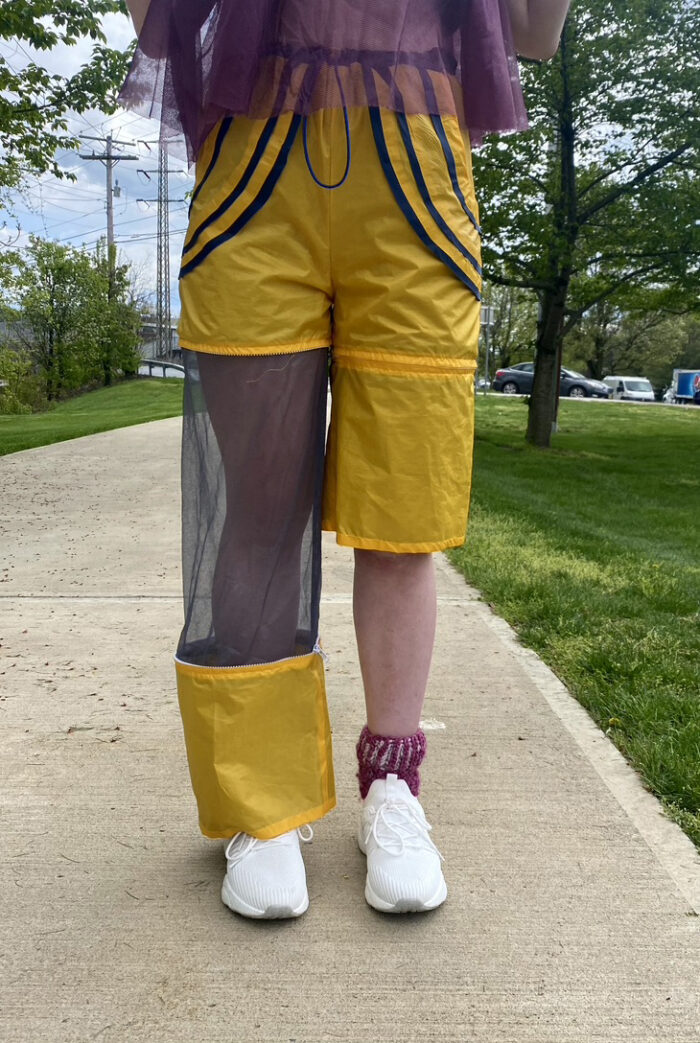
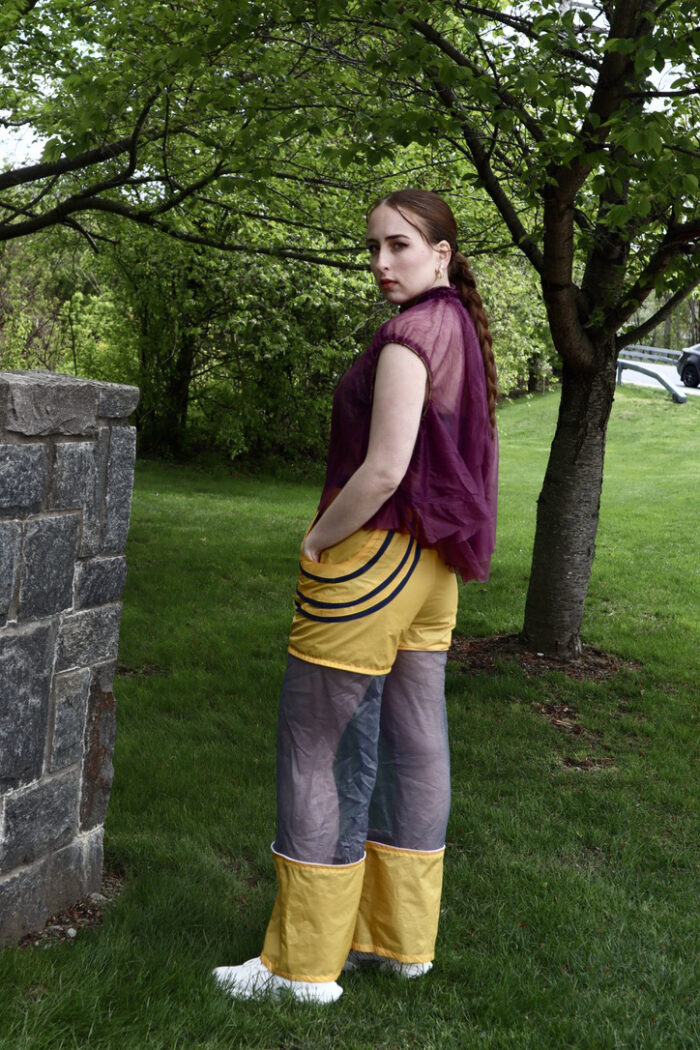
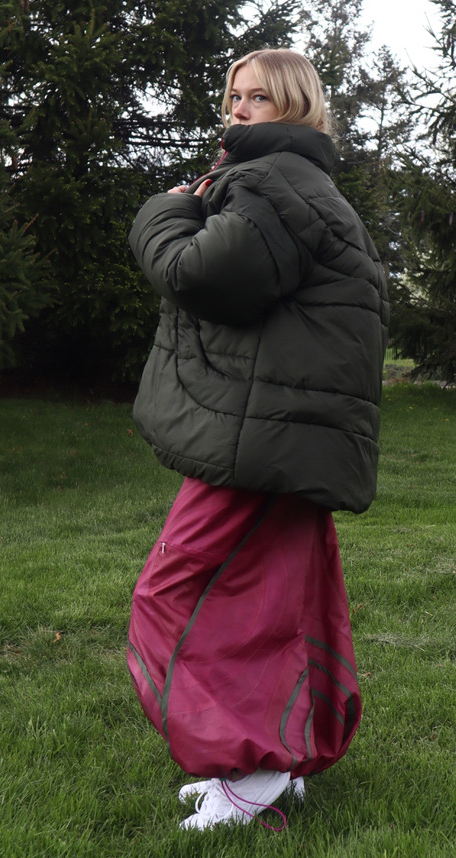
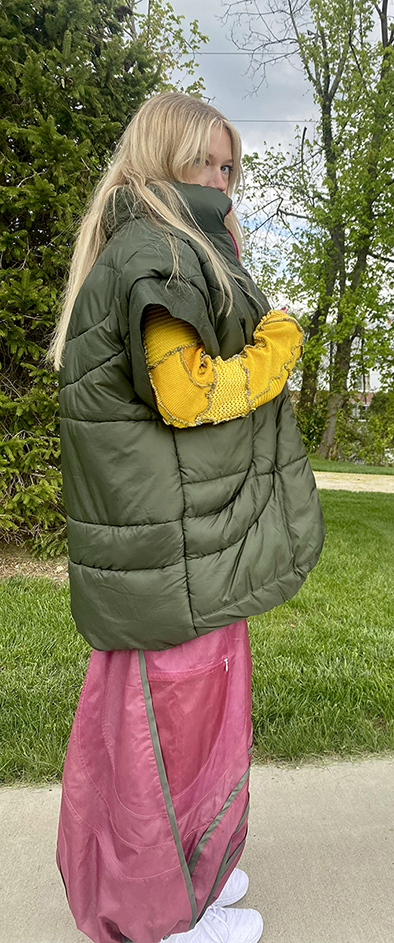
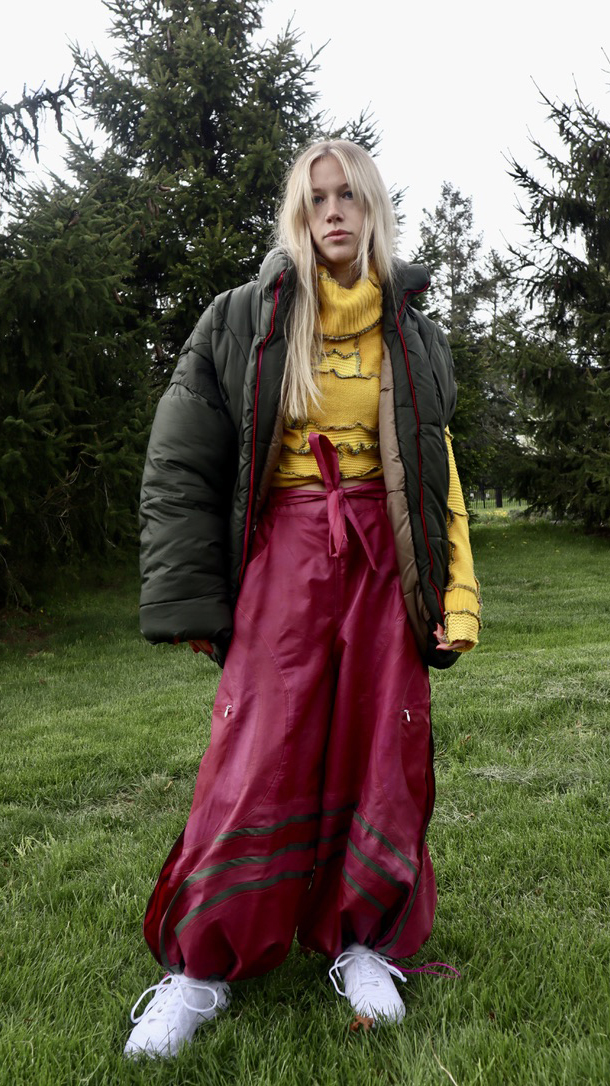
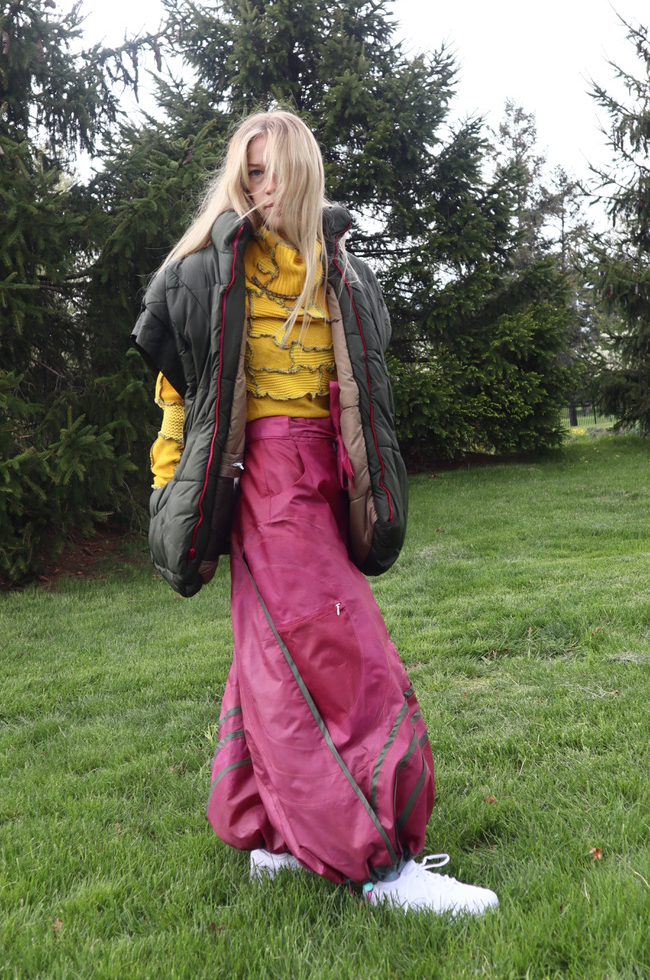
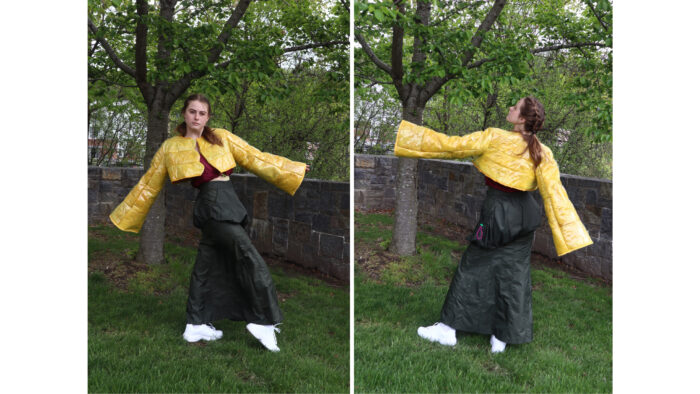
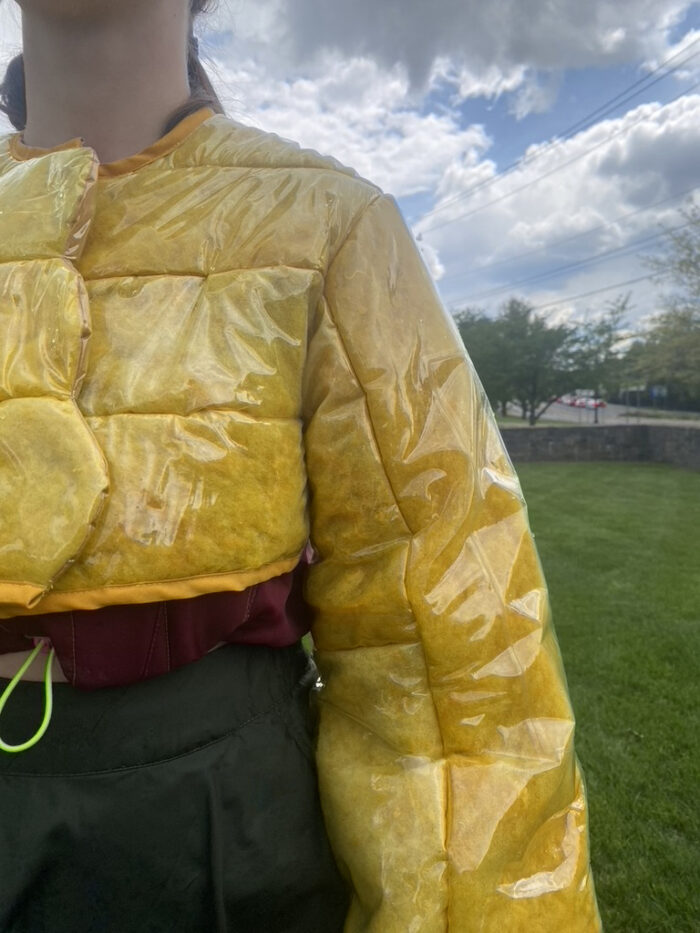
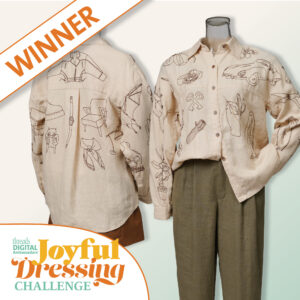





























Log in or create an account to post a comment.
Sign up Log in